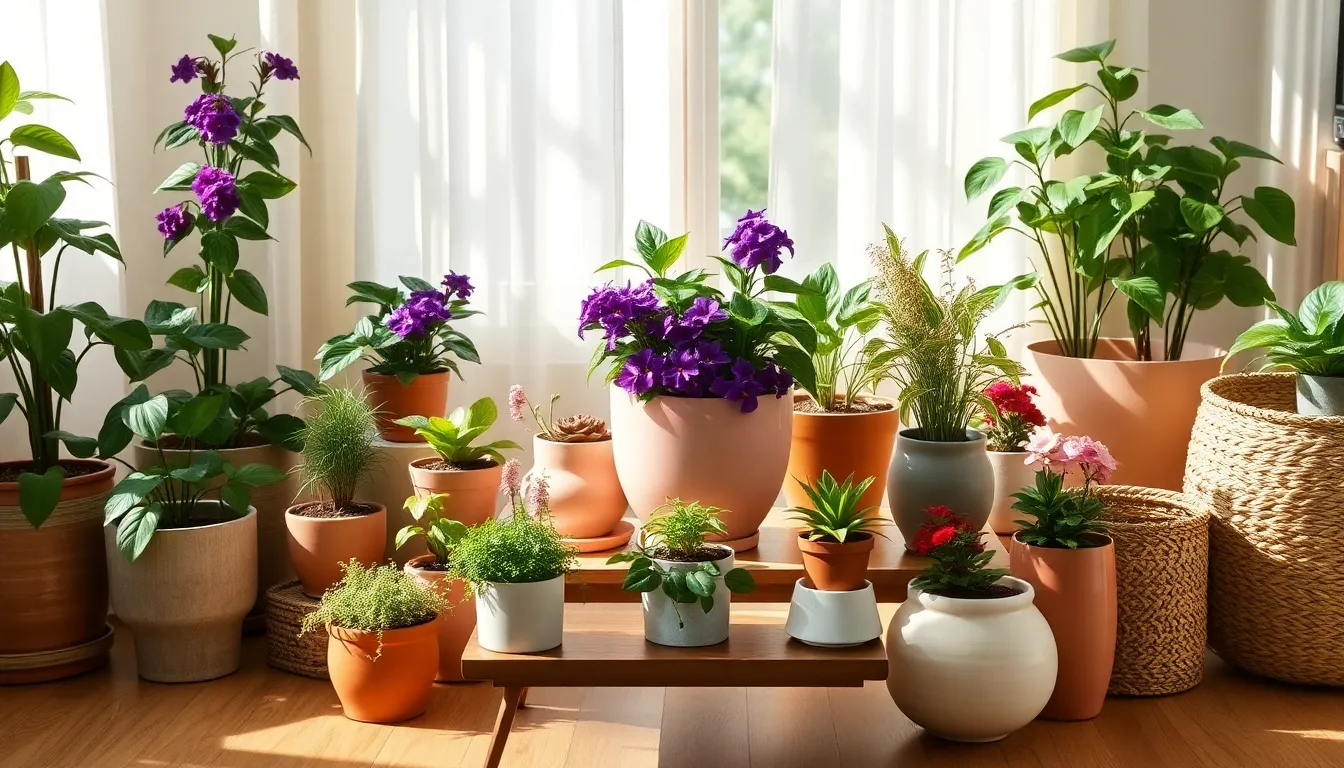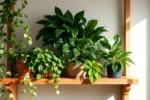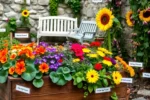Imagine transforming your indoor space into a lush, vibrant oasis that not only beautifies your home but also brings a sense of tranquility to your daily life. Whether you’re just starting your gardening journey or have years of experience under your belt, our guide to the “Top 12 Perennials That Thrive Indoors” is your ticket to cultivating a thriving indoor garden. These perennials are chosen for their resilience and adaptability, making them perfect companions for indoor environments, regardless of your skill level.
With this guide, you’ll discover the joy of nurturing plants that flourish year after year, offering you consistency and reward. Each plant on our list has been handpicked for its ability to adapt to indoor conditions while requiring minimal maintenance, providing both beauty and practical benefits like cleaner air and a calming atmosphere. You’ll feel confident as you watch these plants grow and thrive, knowing you’ve chosen varieties that are perfectly suited for indoor success. Embark on this green adventure with us, and experience the satisfaction of a flourishing indoor garden that reflects your passion and care.
Peace Lily (Low-Light Adaptation)
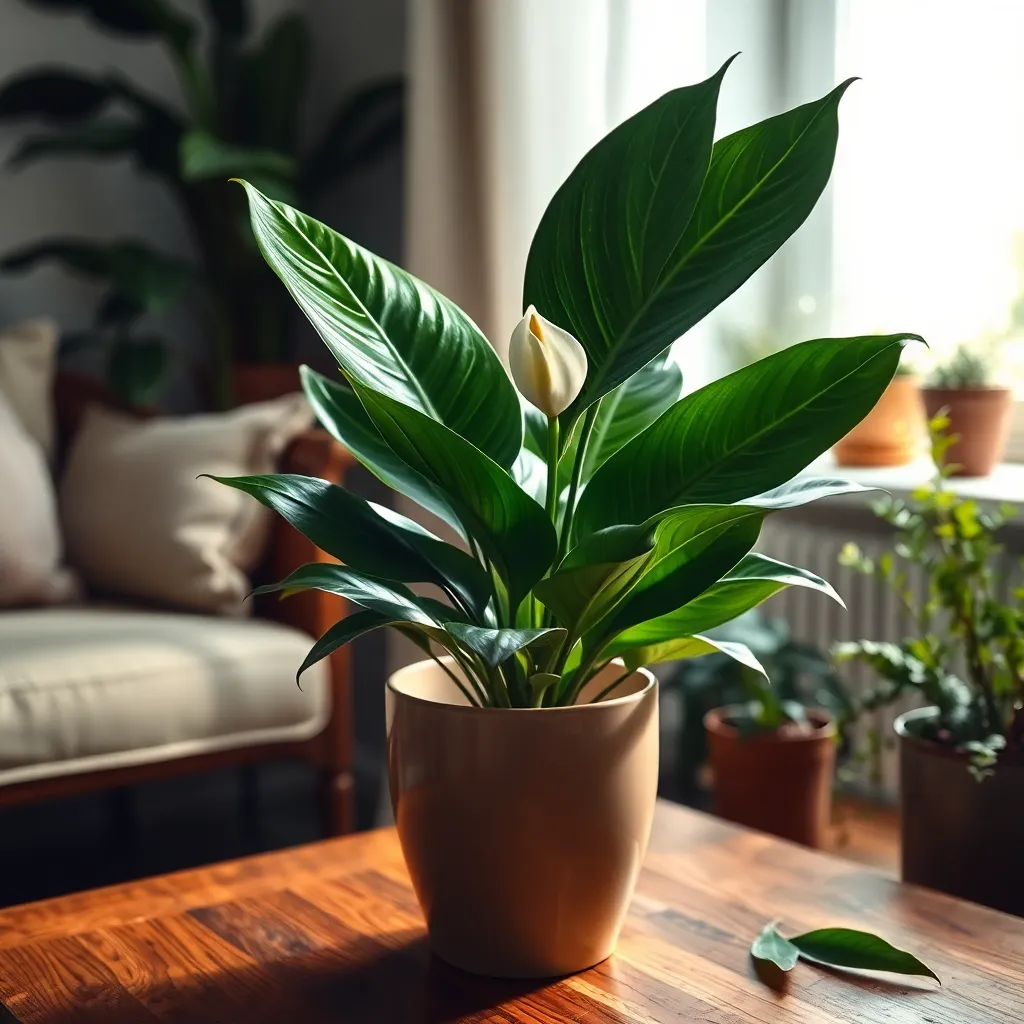
The Peace Lily, known for its lush green leaves and striking white flowers, is a superb choice for indoor environments. It thrives in low-light conditions, making it perfect for rooms that lack direct sunlight.
When it comes to watering, Peace Lilies prefer consistently moist soil but can tolerate short periods of drought. A good rule of thumb is to water them once the top inch of soil feels dry to the touch.
For optimal growth, plant your Peace Lily in a well-draining potting mix, such as a blend of peat moss and perlite. Ensuring that the pot has drainage holes will prevent waterlogging, which can lead to root rot.
Advanced gardeners might consider misting the leaves occasionally to increase humidity, especially during dry winter months. This practice can help mimic the plant’s natural tropical habitat, promoting healthier foliage.
Spider Plant (Air-Purifying Superstar)
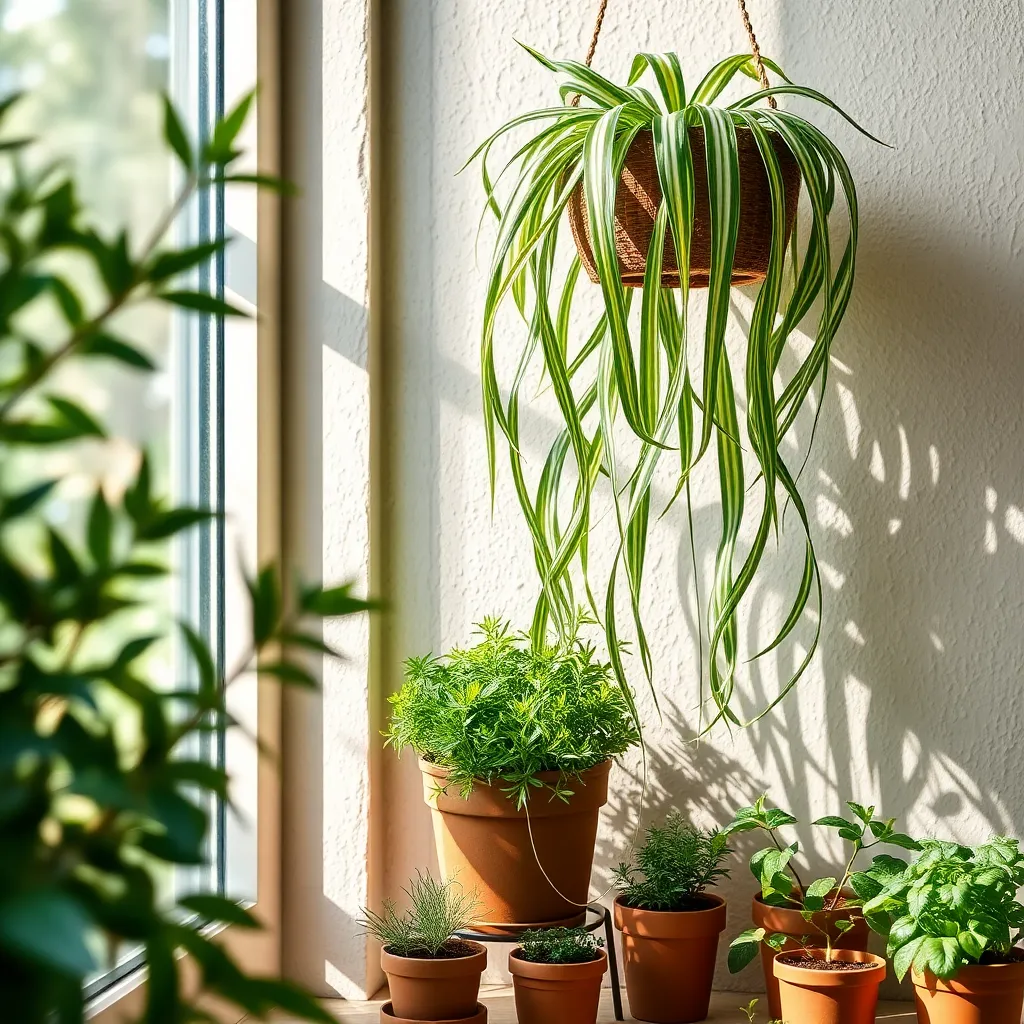
Spider plants, known for their striking arching green leaves with white stripes, are not just visually appealing but also excellent at purifying indoor air. They thrive in a variety of lighting conditions, making them perfect for both brightly lit rooms and those with indirect sunlight.
To ensure your spider plant flourishes, plant it in a well-draining potting mix such as a standard peat-based soil. Water the plant when the top inch of soil feels dry, but be careful not to overwater, as spider plants prefer to dry out slightly between waterings.
These hardy plants are forgiving and can withstand occasional neglect, which makes them ideal for busy gardeners or beginners. For advanced care, consider misting the leaves occasionally to increase humidity, especially during dry winter months.
Every few months, fertilize your spider plant with a balanced, water-soluble fertilizer to promote robust growth. If you notice the plant becoming root-bound, it’s time to repot into a slightly larger container to allow continued healthy development.
Cast Iron Plant (Resilient and Hardy)
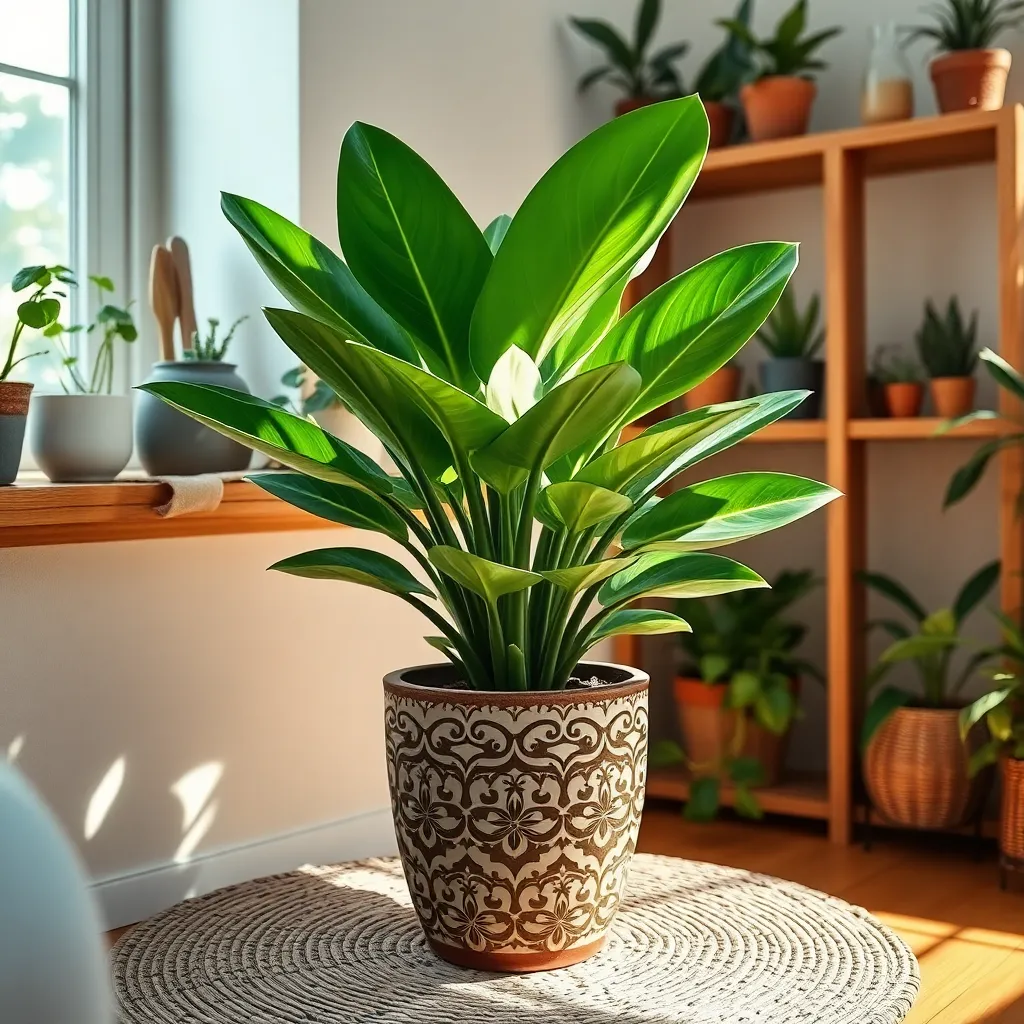
Known for its resilience, the Cast Iron Plant (Aspidistra elatior) is a perfect choice for those seeking a low-maintenance indoor perennial. This hardy plant thrives in a wide range of conditions, making it an ideal option for beginners who might be unsure of their green thumb.
When it comes to light requirements, the Cast Iron Plant is remarkably forgiving. It can tolerate low light conditions, but placing it in indirect light will encourage more vigorous growth and healthier foliage.
Watering is simple with the Cast Iron Plant; it prefers to dry out slightly between waterings. To ensure optimal health, water thoroughly and then allow the top inch of soil to dry out before watering again.
For optimal growth, plant it in a well-draining potting mix rich in organic matter. Every couple of years, consider repotting during the spring to refresh the soil and provide more space for root development.
Anthurium (Vibrant Blooms Year-Round)
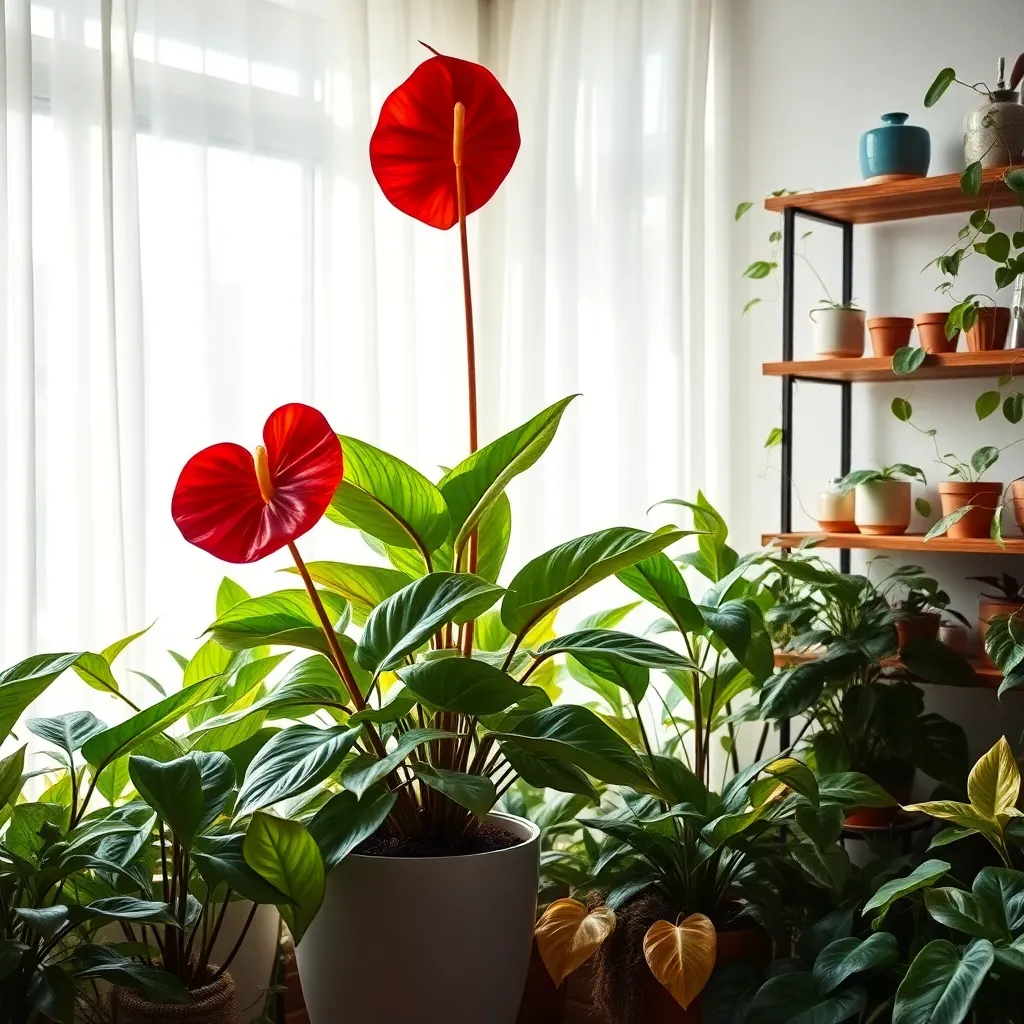
Known for its stunning, heart-shaped blooms, the Anthurium is a fantastic choice for year-round indoor color. These vibrant plants thrive best in bright, indirect light, making them perfect for spots near a window but out of direct sunlight.
To ensure your Anthurium remains healthy and blooms consistently, it’s crucial to maintain a warm indoor temperature, ideally between 65°F to 80°F. Regular watering is essential, but be cautious not to overwater—allow the top inch of soil to dry out between waterings to avoid root rot.
Choosing the right soil is key for Anthurium success. Opt for a well-draining potting mix, such as an orchid mix, which provides the necessary aeration for the roots.
For those looking to give their Anthurium an extra boost, consider feeding it with a balanced, water-soluble fertilizer every six to eight weeks during the growing season. Advanced gardeners can propagate their Anthurium through division when repotting, ensuring more beautiful plants to enjoy or share with friends.
Chinese Evergreen (Versatile and Stylish)
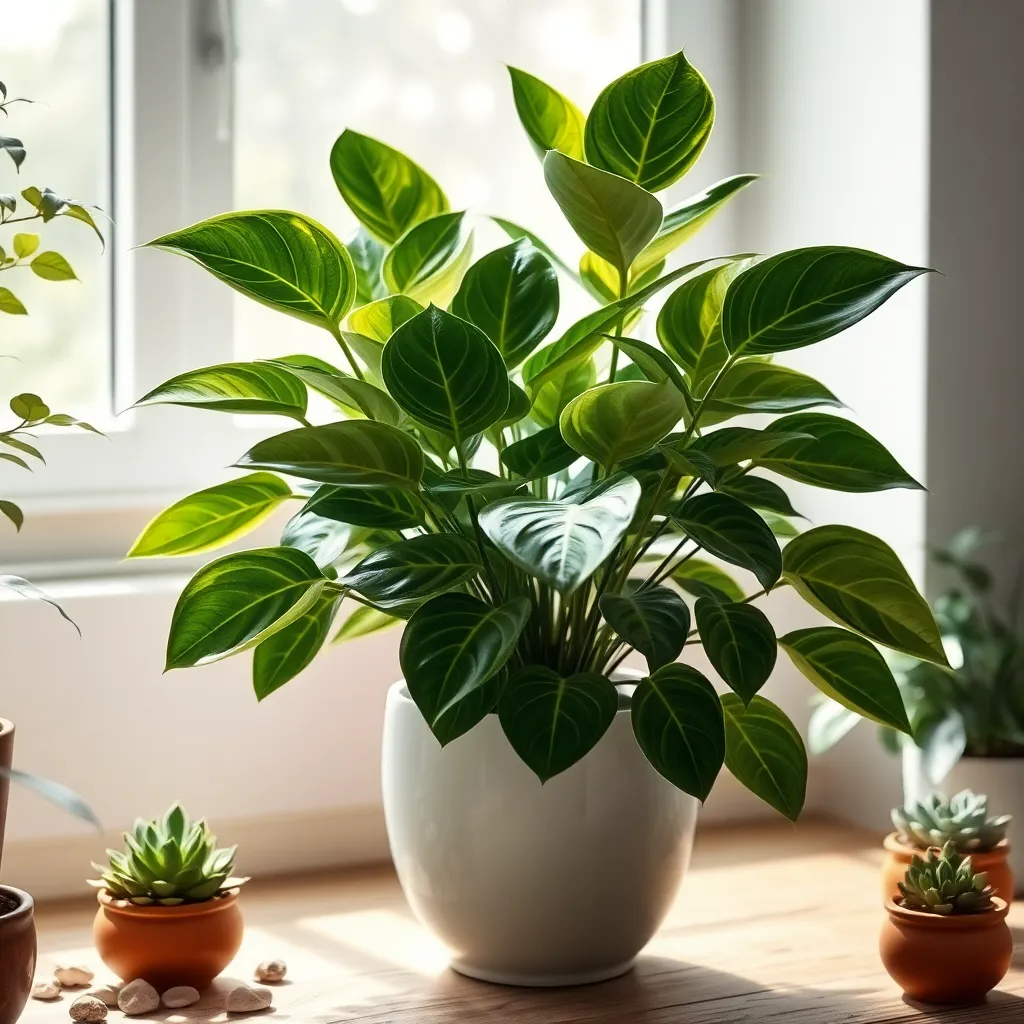
Chinese Evergreen, known for its versatility and stylish foliage, is an excellent choice for indoor gardening. This plant thrives in low-light conditions, making it ideal for spaces like offices and rooms with limited natural light.
Proper care involves maintaining a consistent environment, as Chinese Evergreens are sensitive to temperature fluctuations. Ensure your plant is kept away from drafts and direct sunlight, which can scorch its leaves.
Watering is crucial; allow the top inch of soil to dry out before watering again to prevent root rot. A well-draining potting mix is essential, so consider using a combination of peat, perlite, and sand for optimal growth.
For those looking to enhance plant health and appearance, regular leaf cleaning is advisable. Gently wipe the leaves with a damp cloth to remove dust, promoting photosynthesis and keeping your Chinese Evergreen looking vibrant.
Boston Fern (Humidity-Loving Fronds)
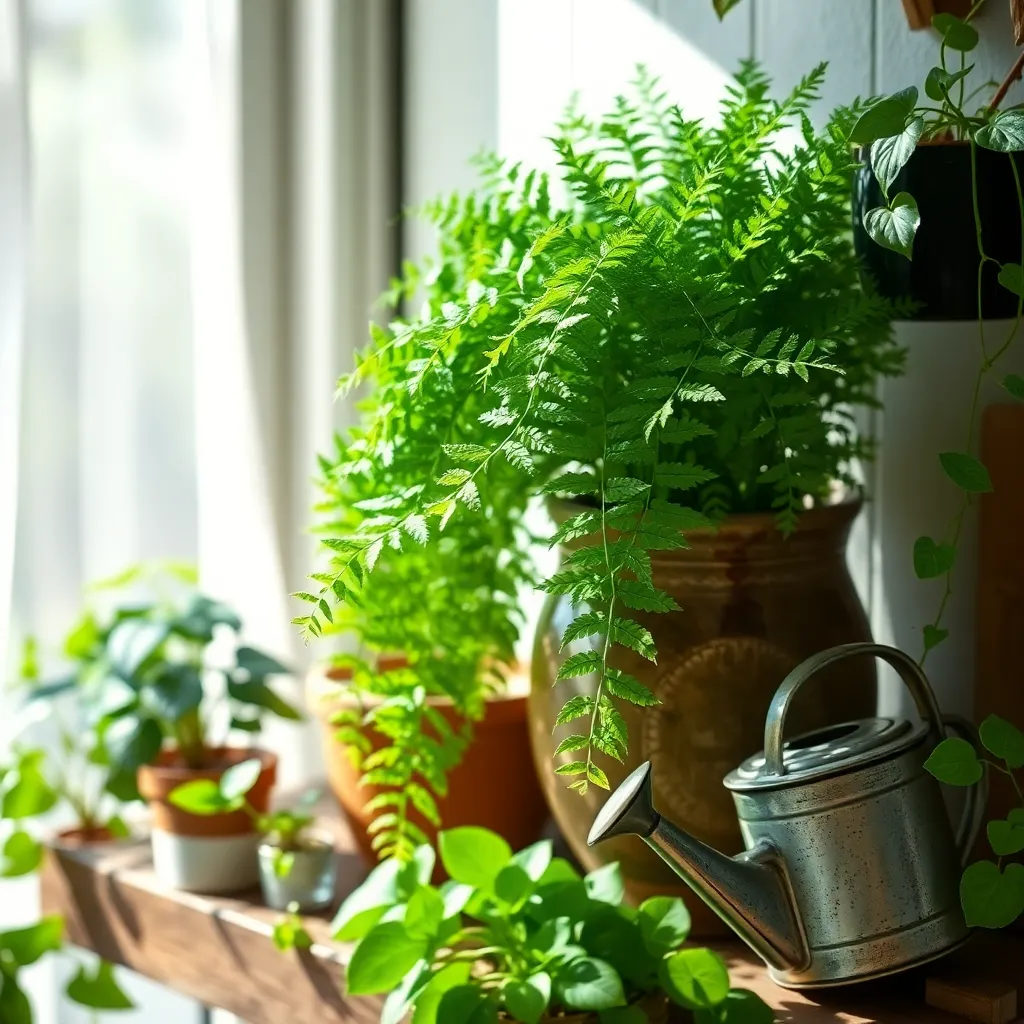
Boston ferns are a beloved choice for indoor gardening due to their lush, arching fronds and love for humidity. To keep them thriving, provide indirect light and maintain a consistent level of moisture in the soil.
These ferns prefer a well-draining potting mix rich in organic matter, such as a peat-based soil blend. Water consistently, ensuring the soil remains damp but not waterlogged, as overwatering can lead to root rot.
Humidity is crucial for Boston ferns, so consider using a pebble tray or a humidifier if your home is dry. Mist the fronds regularly to mimic their natural environment and prevent the leaves from browning at the edges.
For advanced care, fertilize your fern monthly during the growing season with a balanced liquid fertilizer diluted to half strength. Prune dead or yellowing fronds to encourage new growth and maintain the plant’s health and appearance.
ZZ Plant (Neglect-Tolerant Marvel)
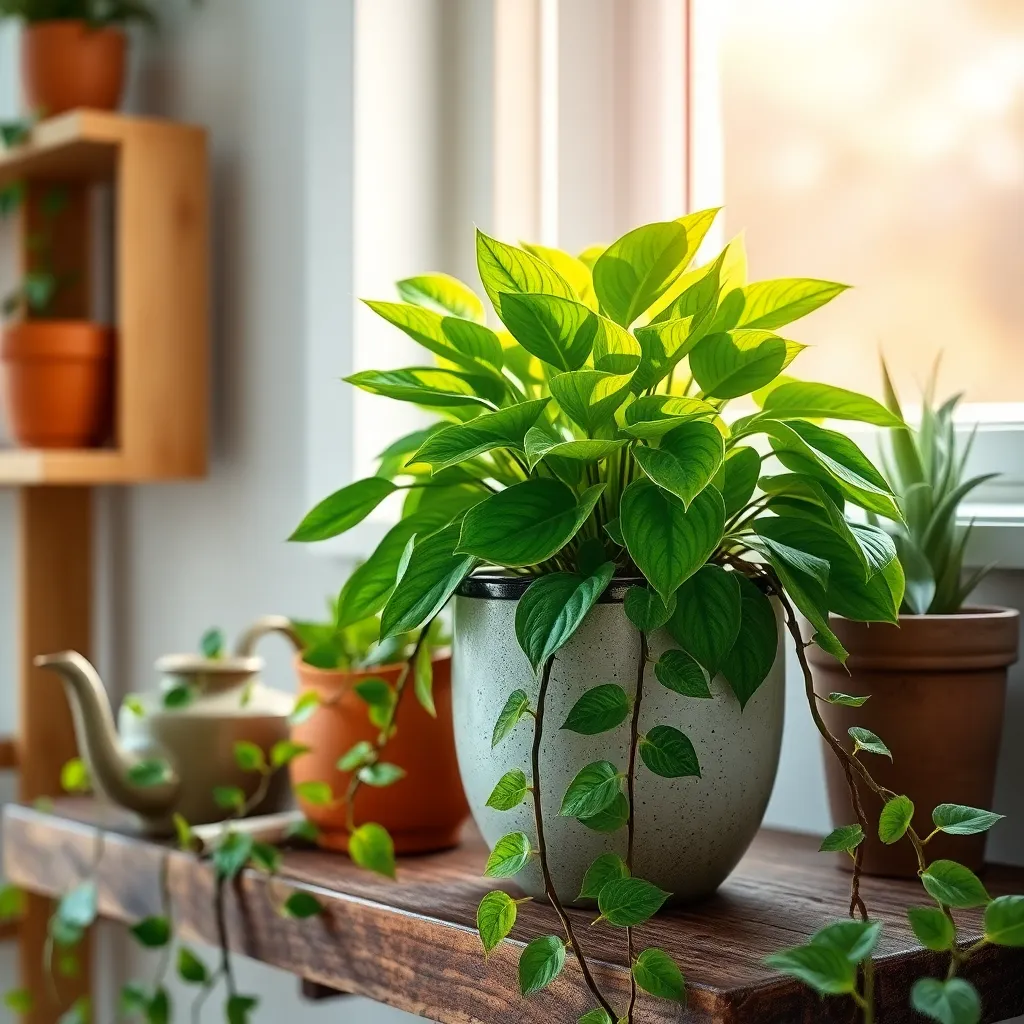
The ZZ Plant, or Zamioculcas zamiifolia, is a standout choice for indoor gardeners who may not have the most reliable care routines. This plant is well-known for its ability to thrive on minimal care, making it perfect for both beginners and those with a busy lifestyle.
Light conditions for the ZZ Plant are incredibly flexible, as it can tolerate low light but will grow more vigorously in bright, indirect sunlight. Avoid placing it in direct sunlight, which can scorch its leaves, and instead opt for a spot a few feet away from a window or under artificial light.
Watering this plant is straightforward: let the soil dry out completely between waterings, as overwatering is one of the few ways to damage it. When you do water, ensure that it’s thorough, allowing water to drain out of the pot’s bottom, which helps prevent root rot.
For soil, a well-draining mix is essential, with a cactus or succulent soil being an excellent choice. Advanced gardeners might consider adding perlite or sand to a regular potting mix to enhance drainage further.
Pothos (Trailing Vines for Elegant Display)
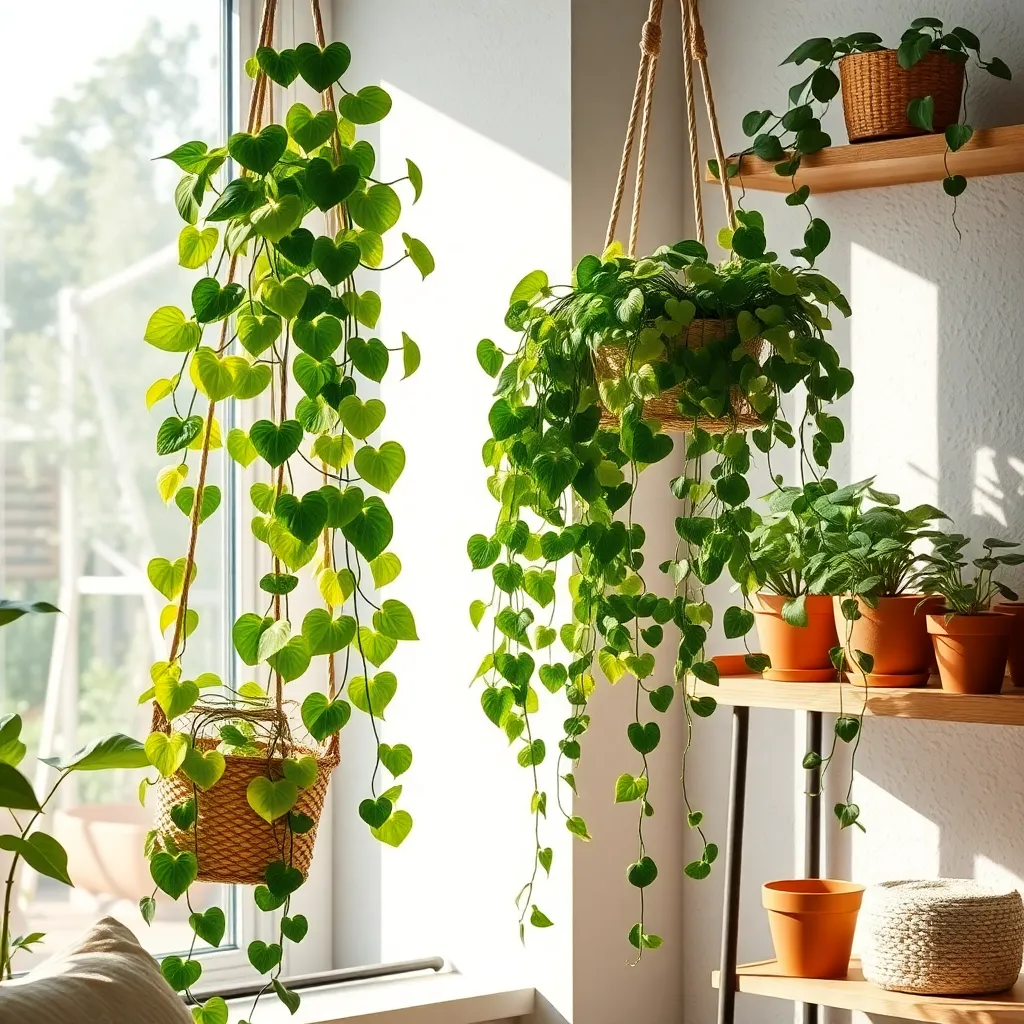
Pothos, known for their elegant trailing vines, are a popular choice for indoor gardens due to their hardy nature and stunning appearance. These plants thrive in a variety of light conditions, from low to bright indirect light, making them versatile enough for almost any room.
When it comes to soil, Pothos prefer a well-draining potting mix, which can be achieved by mixing regular potting soil with perlite or sand. Watering should be done when the top inch of soil feels dry to the touch, ensuring the roots don’t sit in water and develop rot.
For beginners, Pothos are forgiving and can withstand occasional neglect, but for experienced gardeners, they offer opportunities for creative displays. Consider training their vines around a trellis or letting them cascade from a hanging basket for a more dramatic effect.
To promote fuller growth, regularly prune the vines and propagate the cuttings in water or soil to create new plants. Fertilize them every 4-6 weeks during the growing season with a balanced liquid fertilizer to keep them lush and vibrant.
Bromeliad (Exotic Flair with Minimal Care)

Offering an exotic flair with minimal care, bromeliads are a top choice for indoor gardening enthusiasts. These striking plants are not only visually captivating but also easy to maintain, making them ideal for both beginners and experienced gardeners.
To thrive, bromeliads prefer bright, indirect sunlight, mimicking their natural tropical habitat. Place them near a window with filtered light, and they’ll reward you with vibrant foliage and unique flowers.
Bromeliads are adapted to survive with less water than many other houseplants, thanks to their rosette structure that collects moisture. Water them by filling the central cup with water and let the soil dry out completely between waterings to prevent root rot.
For optimal growth, use a well-draining potting mix like an orchid or cactus blend that allows air to circulate around the roots. Avoid heavy, compacted soils that can suffocate the plant—this is crucial for maintaining healthy bromeliads.
Advanced gardeners can experiment with humidity levels, as bromeliads thrive in higher humidity environments. Consider using a humidity tray or a room humidifier to replicate their native conditions, especially in dry indoor air.
Jade Plant (Succulent Beauty Indoors)

Jade plants, also known as Crassula ovata, are a popular choice for indoor gardens due to their stunning appearance and low maintenance needs. These succulents require bright, indirect light to thrive, making them perfect for a sunny windowsill or a well-lit room.
To keep your jade plant healthy, allow the soil to dry out completely between waterings. Overwatering is a common mistake with succulents, so it’s better to err on the side of underwatering, especially during the winter months when growth slows down.
A well-draining soil mix is crucial for jade plants to prevent root rot. Consider using a commercial cactus or succulent potting mix, or create your own blend with equal parts potting soil, coarse sand, and perlite for optimal drainage.
For gardeners looking to propagate their jade plants, leaf or stem cuttings are an effective method. Allow cuttings to dry for a day or two before placing them in soil, ensuring they develop roots without rotting quickly.
Snake Plant (Nighttime Oxygen Booster)
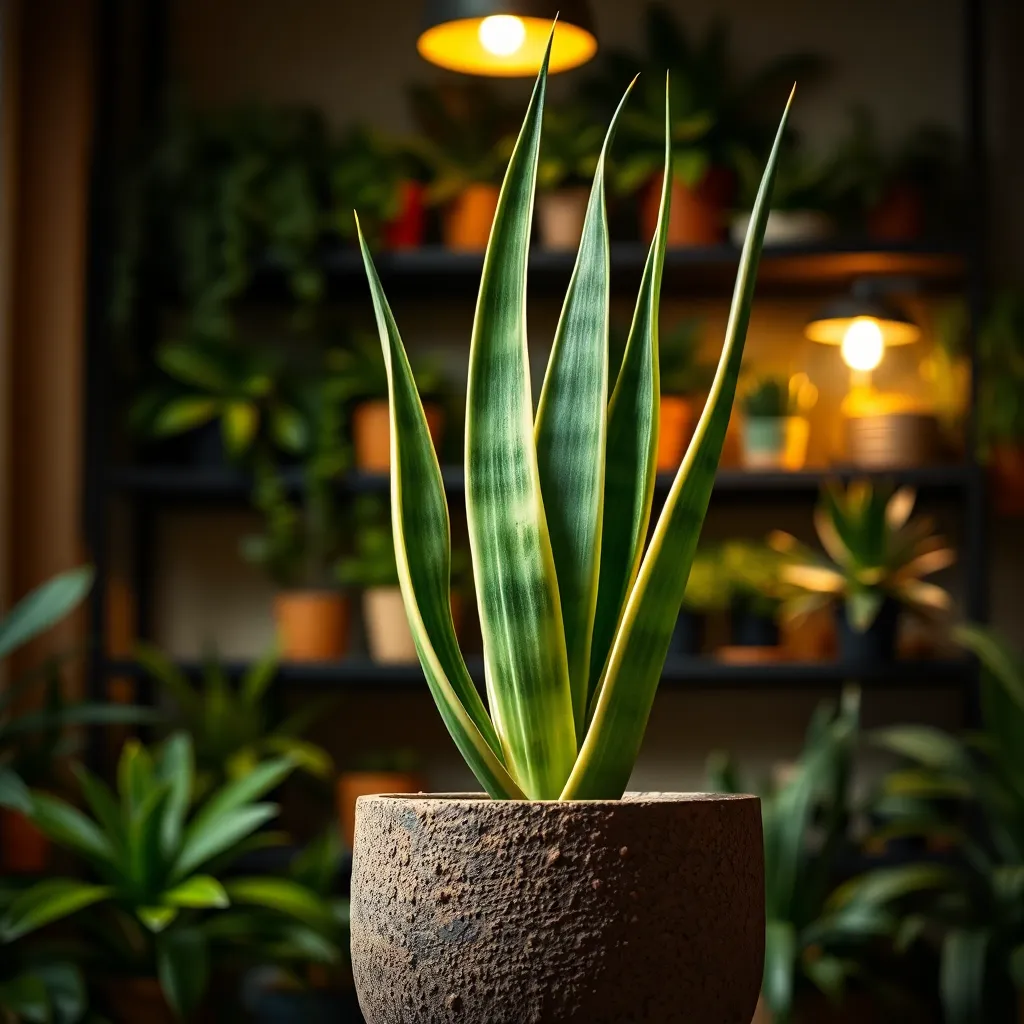
Known for its resilience and air-purifying qualities, the Snake Plant is a popular choice for indoor gardening. Often referred to as a “Nighttime Oxygen Booster,” it releases oxygen at night, making it ideal for bedrooms.
To ensure your Snake Plant thrives, place it in a spot that receives indirect sunlight. While it can tolerate low light, providing bright, filtered light will encourage more robust growth.
Watering is straightforward—allow the soil to dry out completely between waterings to prevent root rot. A well-draining potting mix is vital; consider a cactus soil blend or mix regular potting soil with perlite for improved drainage.
For those looking to enhance growth, fertilize the Snake Plant during the growing season, which is spring through summer. Use a balanced houseplant fertilizer once a month, but avoid feeding during the dormant winter months.
Maidenhair Fern (Delicate Texture, Low Light)

The Maidenhair Fern is known for its delicate, lacy foliage that brings a touch of elegance to any indoor space. It thrives in low light conditions, making it an excellent choice for areas of your home that receive indirect sunlight.
To keep your Maidenhair Fern happy, maintaining consistent humidity is crucial. Mist the leaves regularly or place the pot on a tray filled with pebbles and water to increase humidity levels naturally.
For optimal growth, plant your fern in a potting mix that retains moisture well, such as a mix of peat moss, perlite, and orchid bark. Avoid letting the soil dry out completely by watering whenever the top inch feels dry to the touch.
Advanced gardeners can enhance their plant’s health by fertilizing with a dilute liquid fertilizer once a month during the growing season. Be mindful to avoid over-fertilizing, as this can lead to leaf burn and negatively impact the plant’s delicate texture.
Conclusion: Growing Success with These Plants
In exploring the ‘Top 12 Perennials That Thrive Indoors,’ we’ve uncovered twelve nurturing elements that can strengthen and sustain your relationships. From the importance of communication, trust, and appreciation, to the enriching aspects of shared interests, patience, and adaptability, each concept serves as a guiding light for flourishing connections. We’ve also delved into the value of space, emotional support, and shared goals, alongside the transformative power of forgiveness, humor, and gratitude.
To put these insights into action, choose one concept to focus on this week—perhaps initiating a heartfelt conversation or planning an activity that strengthens your bond. As you embark on this journey of growth, remember that small, consistent efforts can lead to transformative changes.
I encourage you to bookmark this article as your go-to guide for relationship nurturing. By doing so, you’ll have a trusted resource at your fingertips whenever you need a reminder of the enduring principles that keep relationships thriving.
With these timeless strategies in hand, you’re well-equipped to cultivate deeper connections and navigate the ebbs and flows of your relationships with grace and confidence. Embrace this opportunity to enhance your relationships today, and watch them bloom into lasting, fulfilling partnerships.

